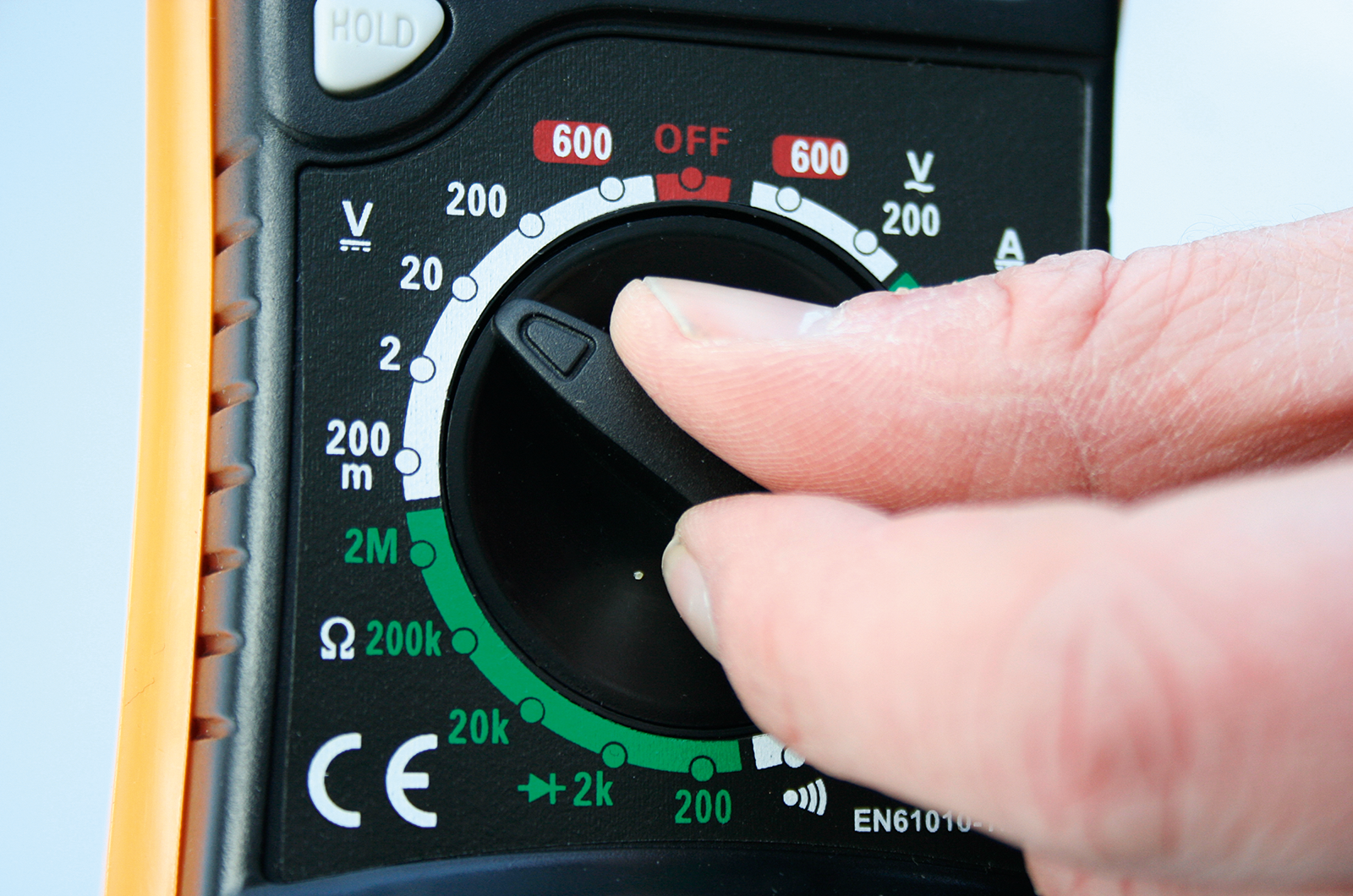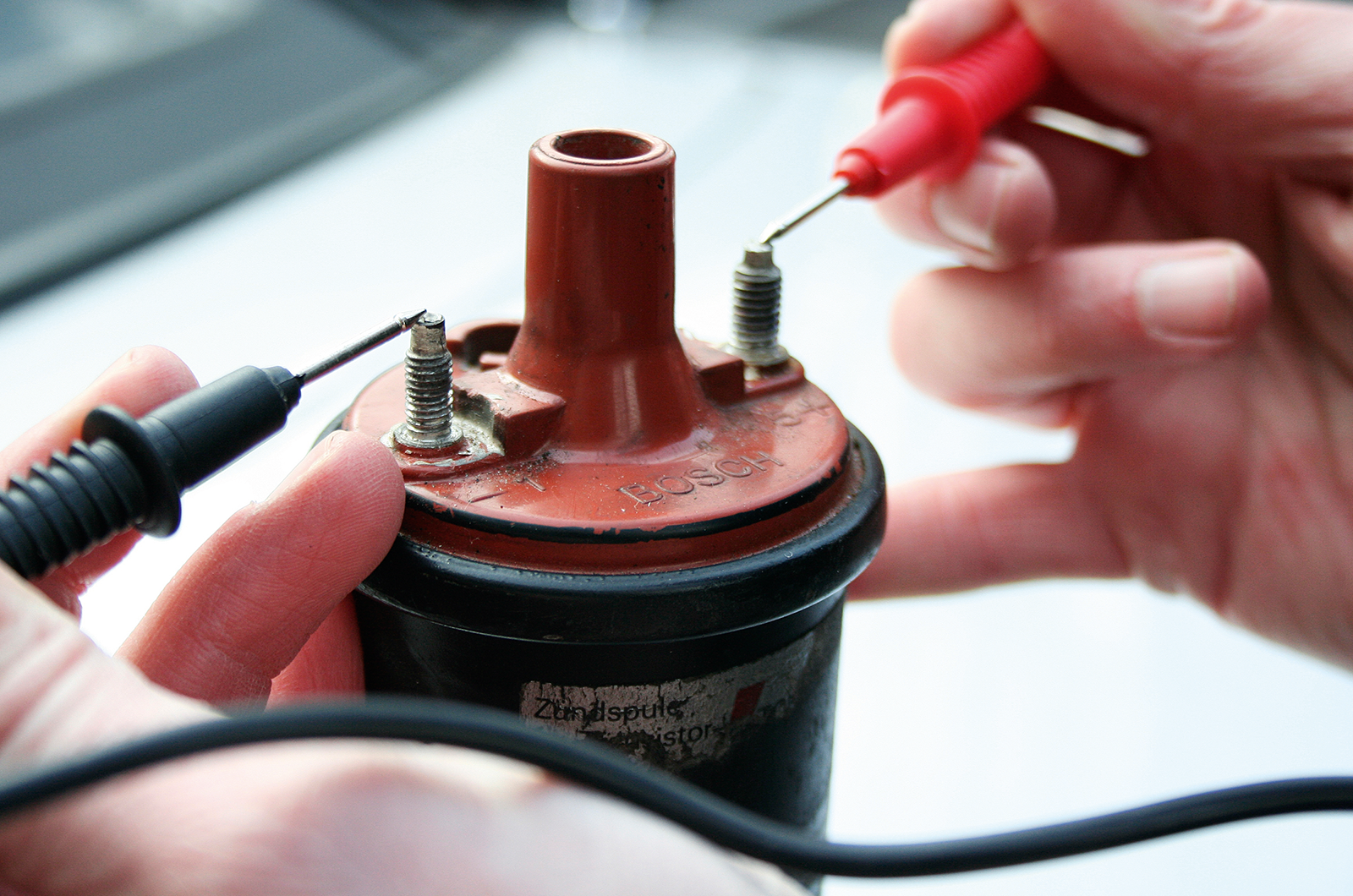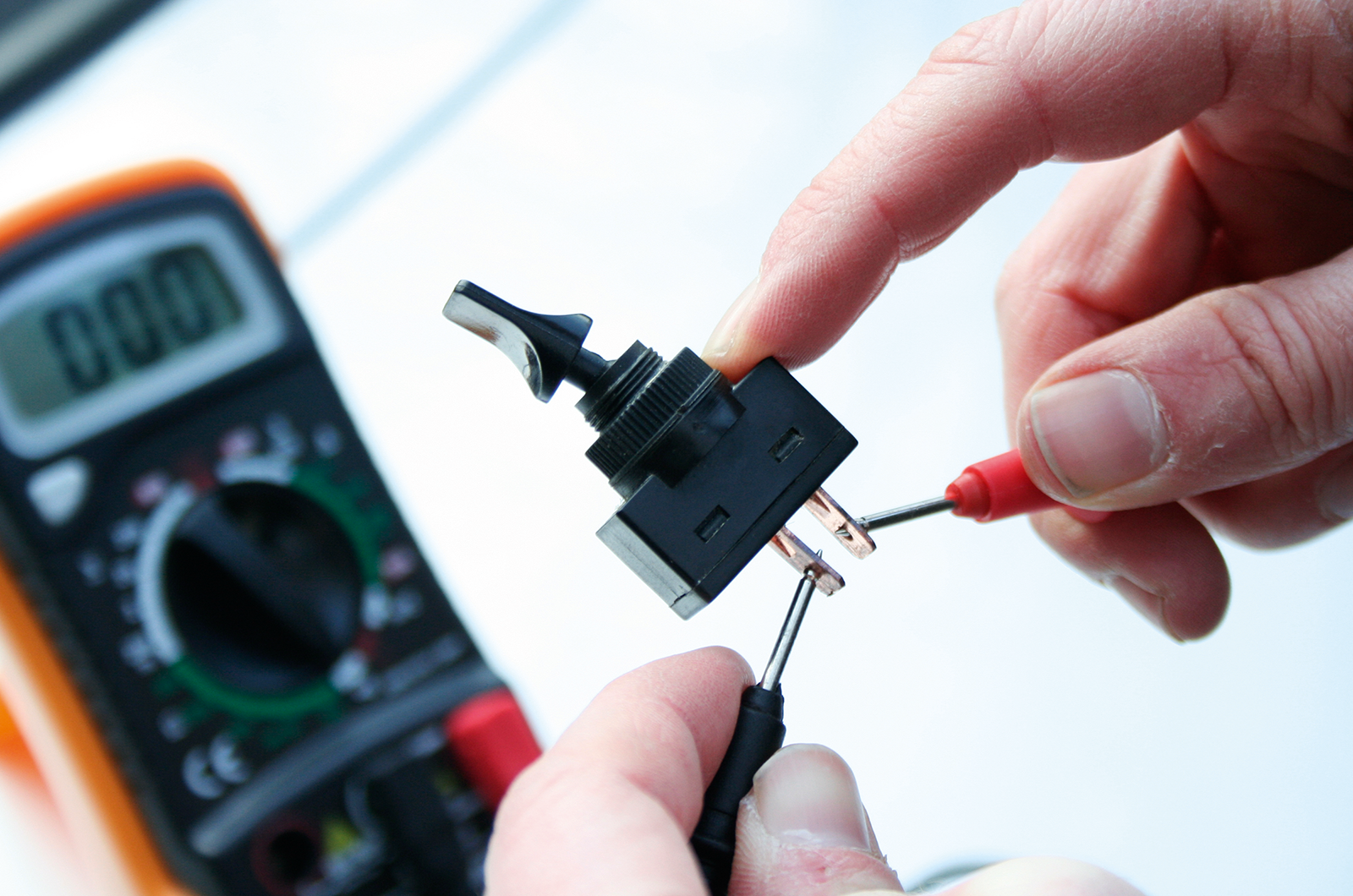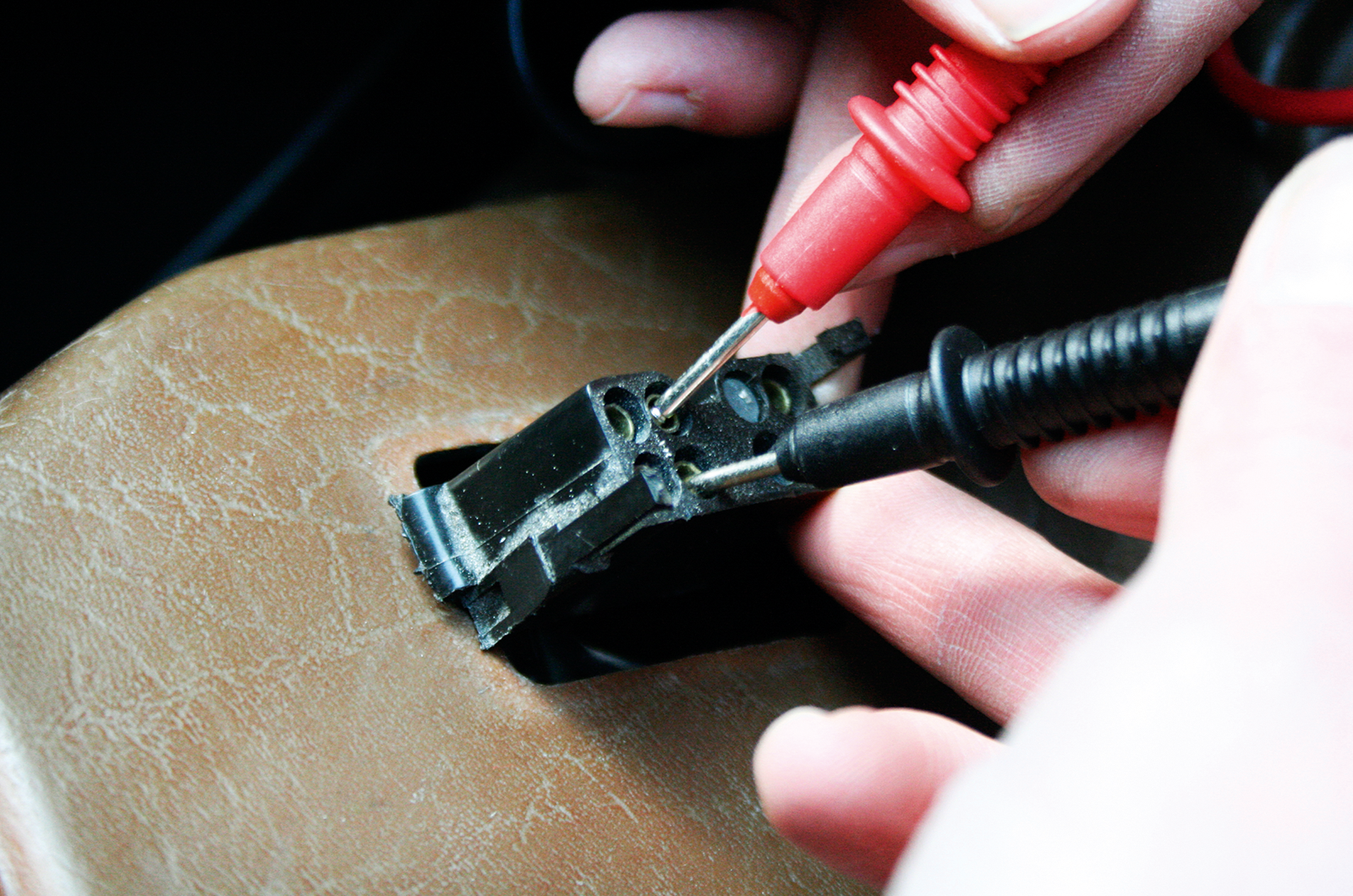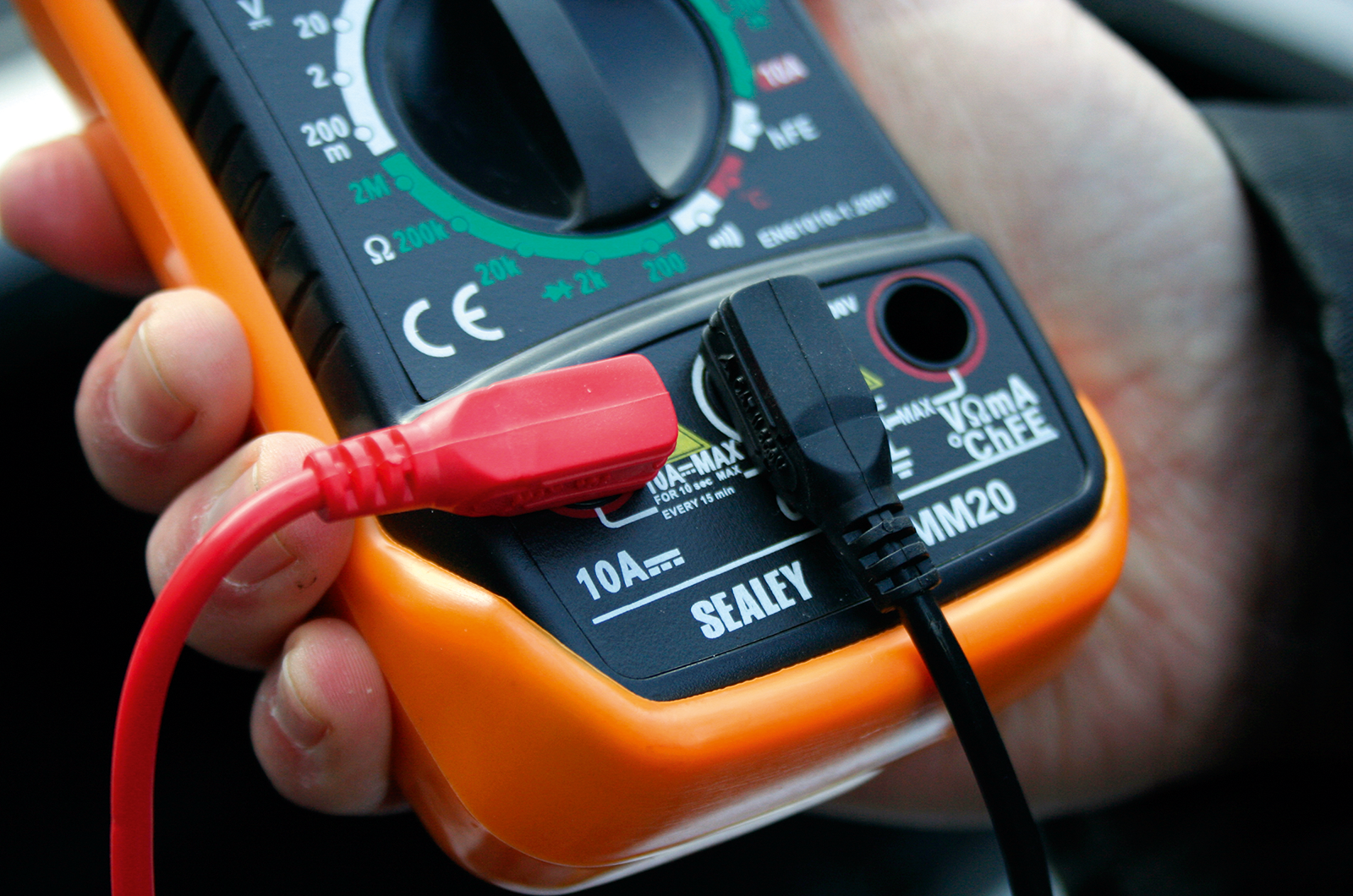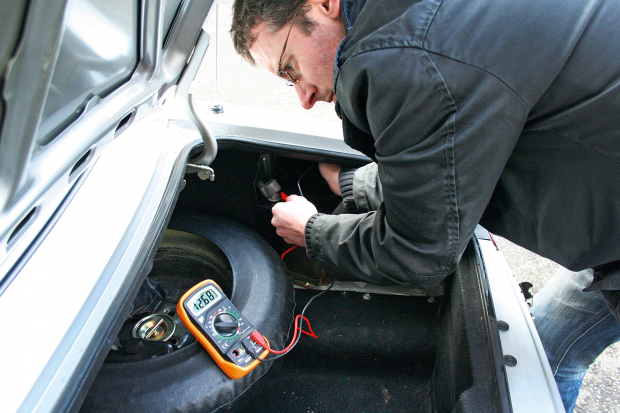
Many of us have been left stranded and confused by electrical problems but, if you work logically, you can usually track them down surprisingly quickly.
Think of a circuit in terms of its elements: at its most basic, it will simply contain the battery, a switch, a fuse and a consumer, such as a bulb, plus the earth-return circuit.
A multimeter is an essential piece of kit to help you test each of these. More expensive units will include a larger range of functions, and should have an auto-ranging facility. This enables you to merely select, for example, ohms.
The meter will then automatically adjust to display small figures for a coil’s primary circuit, or large ones for its secondary circuit. Even basic multimeters without this function, however, will give you the readings you need once you’ve established the correct range.
Remember basic maintenance: ensure that connections and terminals are clean, and that earthing points are rust-free.
When testing the battery on a negative-earth car, connect the meter’s black lead to a good earth, and the red lead to the test point. On positive-earth cars, it’s the other way around.
COMMON FUNCTIONS
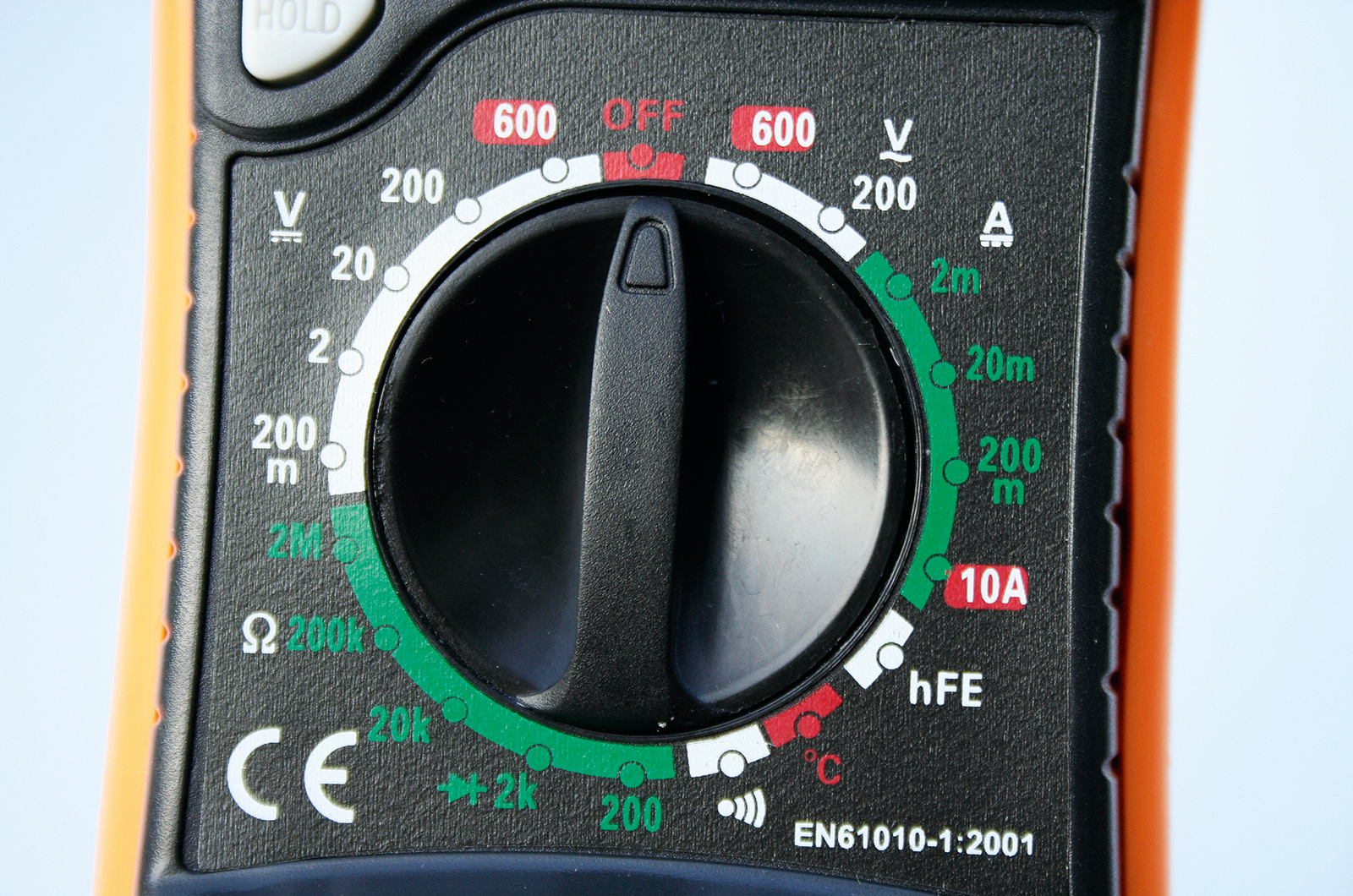
The meter shown here is a basic model but it includes the most commonly used functions.

